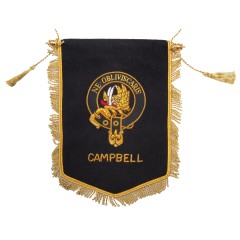-
Kilts
- Jackets
-
Sporrans
Dress Sporrans are the most formal and eye-catching type of civilian sporra..The trusty 'all-rounder': not as informal as the Day Sporran, not as formal..The Day Sporran is a trusty, durable everyday accessory for your Highlandwe..Here you'll find quality sporran accessories and spares. Spruce up your out..
-
Women
Whether you’re heading out for a brisk evening walk or attending a sophist..Crafted with meticulous attention to detail, our waistcoat will feature yo..St Kilda’s Tweed blazers and waistcoats are meticulously handcrafted in Sc..Looking for a practical bag that also celebrates your Scottish heritage? S..
-
Accessories
Here you will find buttons and swatches. We recommend swatches as the best..Here you will find the essential Hangers, Bags and Carriers for storing and..
-
Gifts
Celtic artists from Scotland and Ireland have left a legacy which has endu..
- Clan
-
Clearance
No waiting - all these hand-made sporrans are made up and ready to go. All ..
Crest Meaning: Carnegie
Carnegie. Here’s a more unusual crest, a winged thunderbolt.
In Ancient Greece the eagle and thunderbolt were symbols of Zeus, and this continued with the Romans for Jupiter. Because of their associations, the combined emblem of winged lightening was adopted by the Roman legions, and it was a common sight on the shields of soldiers.

In the Renaissance period the symbol was reived and could be found in a number of places, including coins. It is not clear when the Carnegies adopted this symbol. It was certainly in use by the 1690s, when Sir George MacKenzie noted it in his Families of Scotland manuscript. It is shown on the 1700 the seal of James Carnegie, 5th Earl of Southesk, published in Mémoires du comte de Gramont.

This crest may have originated when Sir David Carnegie was made a lord in 1616, or an earl in 1633. William Fraser seems to trace the origins of the crest to this man, although there was some variation between him and his successor. The first earl had a right hand grasping a winged thunderbolt, or just a thunderbolt, while the second earl just had the thunderbolt.
On the one hand the seal evokes the Roman world, while on the other, combined with the motto ‘Dred God’, it is meant to evoke the awesome power of Jupiter, meaning the Christian God. It was sometimes latinised to ‘Deum timete’.
MKP 28 October 2020





















-240x240w.jpg)


















































